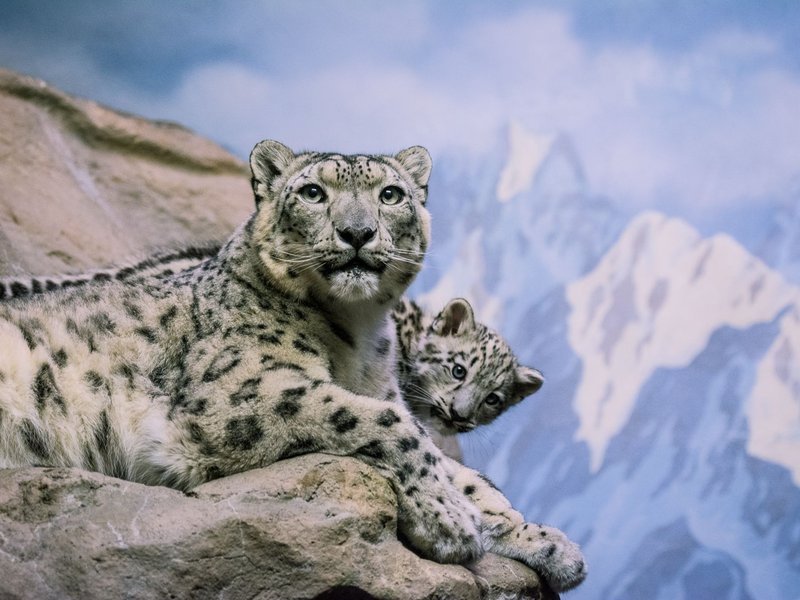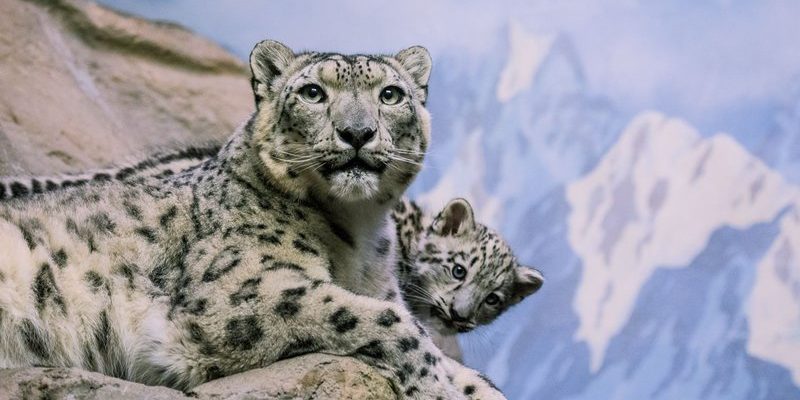
Their habitat ranges across some of the most stunning landscapes in the world, from the rugged mountains of Central Asia to the cold, high-altitude plateaus. Understanding where snow leopards live isn’t just about maps and geography; it’s about grasping how these incredible animals have adapted to thrive in some of the harshest environments on Earth. So, let’s delve into the world of snow leopards and explore their natural habitats and distribution.
The Mountains of Central Asia
Snow leopards primarily inhabit the towering mountain ranges of Central Asia, spanning countries like Nepal, India, Bhutan, Mongolia, and Tibet. These areas provide the perfect mix of rocky terrain and steep cliffs, which the leopards use for hunting and shelter. The impressive elevation of these regions is crucial—the leopards thrive at altitudes between 9,800 and 14,800 feet. This high-altitude living gives them a distinct advantage over their prey, like mountain goats and sheep, who aren’t as agile on steep slopes.
Here’s the thing: these environments are not just beautiful; they’re unforgiving. Temperatures can plummet below freezing, and snow covers the landscape for months. Despite this, snow leopards have adapted remarkably well. Their dense fur and thick tails help them navigate and stay warm in these challenging climates. Imagine wrapping yourself in a cozy blanket when it’s cold outside—this is their secret to survival.
Climate and Geography
The climate where snow leopards reside is quite unique. We’re talking about alpine and subalpine zones that experience heavy snowfall and cold temperatures, especially during winter. The weather can be unpredictable, with sudden storms appearing out of nowhere. Snow leopards have evolved to be masters of this environment, capable of enduring harsh winds and freezing conditions.
Geographically, their habitats include steep mountain ridges, rocky outcrops, and high-altitude grasslands. These areas don’t just provide shelter; they also offer a rich variety of food sources. Snow leopards primarily prey on herbivores like ibex, Argali sheep, and markhor, which thrive in these rocky terrains. It’s an intricate dance between predator and prey that keeps the balance of this ecosystem.
Range and Distribution
When we talk about where snow leopards live, we also touch on their geographical range. They cover a vast area across the mountains of Biodiversity Hotspots in Central Asia. Their distribution isn’t uniform, though; they tend to inhabit smaller, fragmented populations spread throughout their range. This can make spotting them even more difficult.
You might be wondering why these cats have such a scattered distribution. The answer lies in their need for territory. Each snow leopard requires a significant amount of space to roam and hunt. They usually require around 20 to 30 square miles of territory, and this can vary based on the availability of prey. If their food sources dwindle, they may need to venture further, impacting their already fragmented existence.
Conservation Areas and Protected Regions
Despite their harsh habitats, snow leopards are unfortunately faced with numerous threats, from habitat loss to poaching. To combat this, many countries have established protected areas and national parks to help preserve their habitats. For example, the Khangchendzonga National Park in India and the Snow Leopard National Park in Mongolia are vital sanctuaries for these elusive big cats.
Protected areas are crucial not just for the snow leopards themselves but also for the entire ecosystem. These regions allow various species to coexist and flourish without the pressures of human encroachment. Here’s the thing: when you protect a snow leopard’s habitat, you’re also safeguarding countless other species and the stunning landscapes they inhabit.
The Impact of Climate Change
With climate change creeping into the equation, the habitats of snow leopards face new challenges. Warming temperatures and unpredictable weather patterns threaten the delicate balance of these high-altitude ecosystems. Glacial melting can lead to less snow cover, impacting the prey species that snow leopards rely on.
Wildlife experts are deeply concerned about how these changes will affect snow leopards’ distribution in the future. As their habitats shift and become less hospitable, the leopards may be forced to adapt or move to higher altitudes, where conditions may not be feasible for survival. It’s a tricky situation that highlights the need for immediate conservation efforts.
Understanding Their Role in the Ecosystem
Snow leopards play a significant role in their ecosystems as apex predators. Their presence helps regulate populations of various herbivores, ensuring that the delicate balance of nature remains intact. By preying on the weaker individuals, snow leopards help keep the health of prey populations in check.
But let’s make it clear: preserving snow leopards goes beyond just keeping them alive. It’s about maintaining the entire ecosystem. When snow leopards thrive, they help promote biodiversity, contributing to a more resilient environment. Their loss would ripple through the food chain, impacting many other species.
In summary, snow leopards are truly remarkable creatures that call the harsh, high-altitude mountains of Central Asia home. Their unique adaptations make them masters of survival in extreme conditions, but they face numerous threats that put their future at risk. Understanding where these big cats live, their habitats, and the challenges they face is crucial for conservation efforts.
Protecting snow leopards not only secures their future but also preserves the stunning ecosystems they inhabit. So next time you think of these elusive cats, remember their story—their home is a beautiful, challenging paradise that needs our help. Together, we can ensure these majestic creatures continue to roam the mountains like the ghosts they are.

